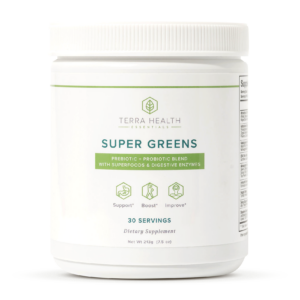Have you ever heard of the saying “if you’re not in it, you can’t win it?”. Well, this is particularly apt when it comes to dealing with joint pain. Many people instantly think of arthritis when they hear about joint pain. But the reality is that there are multiple health issues and factors that can lead to this kind of pain. Muscle weakness, tightness, overuse, aging, inactivity, mobility issues, pregnancy, and weight gain can all cause aches and soreness.. Many healthy young adult exercisers who are free from any arthritis concerns deal with joint pain regularly.
Whether you have a condition that causes your joint pain or fall into one of the above categories, there is an answer. It might not be a cure, but it is a way forward and it may not be what you think. And that solution is: move more.
Yep, you heard that right. Moving more and not less will help you relieve that aching joint pain and improve your health in the process. This especially applies if you’re carrying any excess weight as this can add a great deal of joint stress. In fact, a 2005 study showed that for every pound of fat you lose, there is a “4‐fold reduction in the load exerted on the knee per step during daily activities.”
Of course, you’re not going to go from the couch to 5k overnight. I hear you. Joint pain hurts and can often seem completely overwhelming. You might be sitting at home in pain debating whether or not you can handle going outside for a short walk to the shop right now and I’m here telling you to move even more. So let’s talk about how you can give your body the support it needs to increase activity without increasing pain.
Why Exercise is So Important for Joint Pain

Many people who deal with joint pain tend to ignore it as a coping mechanism. And sure, that makes sense. Focusing less on the pain enables you to try to get on with your life without thinking about it 24/7, which can have a very negative impact on your mood. However, ignoring your pain isn’t the answer. It won’t make it disappear. Adopting a sort of “pain/fear avoidance” (this is a very real issue for people who suffer from pain, and creates a vicious cycle where you avoid any activity that could potentially cause or worsen your pain, which then results in more inactivity, which in turn increases your pain anyway, as you become so deconditioned as a result).
It’s worth noting the absolutely endless list of benefits to exercising regularly. Such as keeping your heart healthy, increasing your lifespan, lifting your serotonin levels (for those happy feelings!), improving sleep quality, alleviating stress, improving bone density, and reducing blood pressure. In the medical field, Osteopathic Physician Hareth Madhoun has further noted that “people who exercise have improved daily function, decreased depression and fatigue, reduced pain, and improved sleep,”
H ow to Support Your Body to Move More
ow to Support Your Body to Move More
Exercising with pain is all about finding the right supports to make movement as minimally painful as possible. Anti-inflammatory pain relievers or whatever medication your doctor may have prescribed, alongside things like Epsom salt baths, soothing muscle balms and hot and cold packs can all offer the relief you need pre and post-exercise to help you get into the swing of things. Over time, you may be surprised to find that you don’t need to use these supports quite as often as your body becomes stronger and more conditioned.
Your comfort zone is a nice place to hang out now and then. But sometimes you have to push things a little further. The question is, how far do you push? For people returning to exercise after a long period, increasing their exercise, or starting up for the very first time, it can be difficult to tell the difference between fatigue and pain. And this is often the very first hurdle they encounter because pain is bad, right? Well, yes and no. What you initially think of as pain may just be your body getting used to your new regime.
How Much Pain is Too Much Pain?
 Usually, this kind of fatigue-related pain eases off once you get used to regular exercise, but the goal is to get to that point and past it without panicking and giving up. Remember, fatigue is normal (for the most part, chronic illnesses aside, in which case please do refer to your physician). It’s a sign that you’ve worked hard. That’s all.
Usually, this kind of fatigue-related pain eases off once you get used to regular exercise, but the goal is to get to that point and past it without panicking and giving up. Remember, fatigue is normal (for the most part, chronic illnesses aside, in which case please do refer to your physician). It’s a sign that you’ve worked hard. That’s all.
If you’re particularly concerned about a perceived increase in pain, concentrate and narrow down where the pain is coming from. If it’s pretty much the same on both sides and in the same place and the same kind of pain then it’s probably DOMS (delayed onset muscle soreness). And that’s nothing a few ice packs, a rest day, and a nice warm bath won’t fix. However, if you have one specific pain point in one area that’s affecting your ability to do your everyday tasks then you may have injured yourself. This is the point where you should consider seeing a medical professional.
Good Vs Bad Pain
A 2017 review published in the Cochrane Database of Systematic Reviews examined a number of studies that looked at the effects of exercise on chronic pain. The evidence from this suggested overall positive effects with very little downsides to exercising whilst suffering from joint pain. Researchers found the benefits of increased and regular activity improved physical functioning and decreased pain in joints. In addition, improvements in quality of life were significantly noted.
Now, reading up on studies is one thing. But actually putting things in motion is another. There is a middle ground of becoming more active whilst keeping pain to a minimal level or at least without aggravating it further. The issue here is that some discomfort from activity is normal. So it can be difficult to differentiate between pain that is “harmless” and pain that really shouldn’t be occurring. So how do you know when your pain is too much and how can you avoid it from becoming so?
 The first thing to be aware of, and try to remind yourself of regularly, is that it’s normal to feel a little achy after exercising. You cannot damage your joints by exercising unless you’re doing something completely off the wall that leaves you at high risk of injury. Having some aches and pains after exercise doesn’t mean you’ve done any irreparable damage. And it doesn’t mean that moving more is bad for you.
The first thing to be aware of, and try to remind yourself of regularly, is that it’s normal to feel a little achy after exercising. You cannot damage your joints by exercising unless you’re doing something completely off the wall that leaves you at high risk of injury. Having some aches and pains after exercise doesn’t mean you’ve done any irreparable damage. And it doesn’t mean that moving more is bad for you.
If you’ve been inactive for a while or suffer from an illness such as arthritis, things like reduced mobility will mean that working out can be uncomfortable for you at times. Even completely healthy people suffer the next day after a workout! DOMS, as we mentioned earlier, is a very real thing and it is NOT fun! But, it’s not dangerous and it’s nothing to worry about. In either case, regular exercise – especially weight-bearing exercise – will help to strengthen your muscles which will then be better equipped to support and protect your joints. It’s a bit of a team effort really!
So What Kind of Exercise Should You Do?
- Weight training is one of the top treatments for joint pain. It will improve your balance, posture, and strength which should in turn help to alleviate your pain.
- Aerobic exercise is another option to improve your overall fitness, cardio, and general stamina. Think walking, swimming, cycling, jogging, anything that gets your heart rate up. Although this is best utilized in combination with some kind of resistance program if possible. You may need to avoid high-impact aerobic activities depending on the cause of your joint pain.
- Flexibility movements are also essential to help to loosen up those muscles and improve your mobility. This includes things like yoga and pilates which won’t help you to lose weight but will help you to become more supple and relieve some of your pain and discomfort.
Whatever exercise routine you decide to embark on, make sure that it’s something you enjoy. This is what will make you stick with it. Try to get some friends on board too and it won’t feel like a chore at all. In fact, you’ll start to look forward to it once you see improvements in how you look and feel!
 Natural Support For Healthy Joints
Natural Support For Healthy Joints
Our Super Greens powder supplement is packed with nutrients and anti-inflammatory ingredients to support better joint health. Just mix a scoop into your morning or post-workout shake!
Our loyal readers get a special 30% discount on Super Greens using the code keepmoving30 when placing your order!
Don’t forget to follow us on Facebook where you can contact us anytime with questions or a customized treatment plan!

